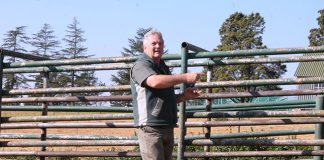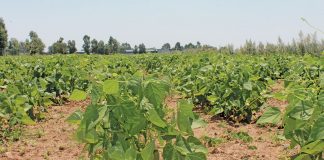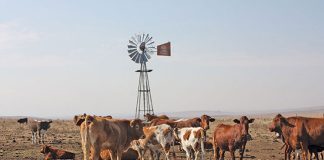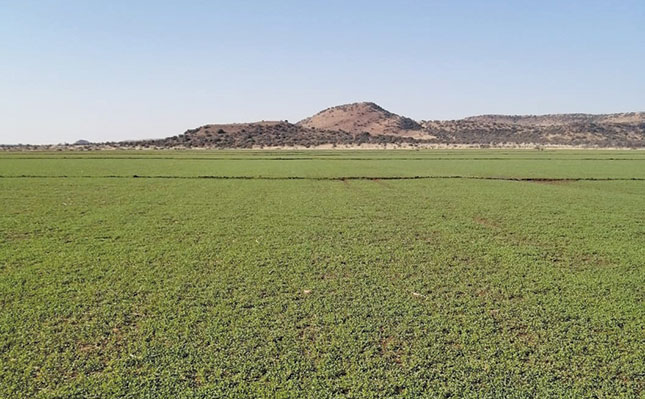
Photo: Supplied
It is a dry, late winter’s day on a farm in the Glen area, north of Bloemfontein, where a plume of dust trails the tractor carrying Freek Strauss as he plants a 30ha, pivot-irrigated lucerne land.
Strauss is primarily a lucerne producer who works the lands for his employer, local farmer Dirk Botha.
Although the production of lucerne hay is the main business of the farm, the crop is also used for another important purpose: to improve soil health.
Lucerne, like other legumes such as soya bean, lentils and clover, fixes nitrogen in the soil; Strauss therefore plants it in rotation with field crops such as wheat and maize to increase their yield and quality.
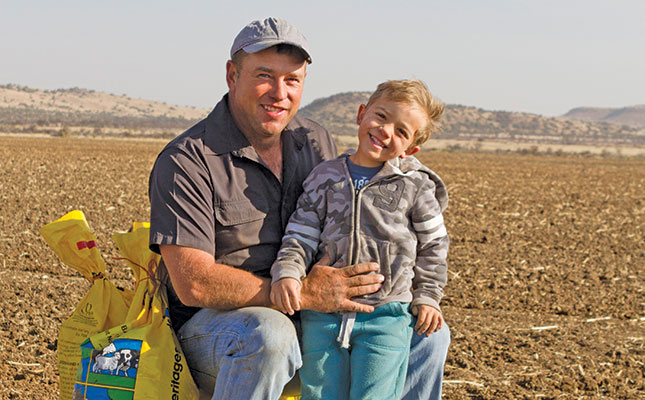
Lucerne as feed
Lucerne’s feed properties have earned it the title ‘king of hays’ and demand for it is high in several livestock sectors, particularly dairy. It can serve as both a grazing crop and as hay.
Strauss’s main focus is the production of prime-grade lucerne hay, baled in large packs and sold by the ton via both local and export channels, depending on which presents the best opportunity for a specific grade at any given time.
The National Lucerne Trust (NLT) is the representative body of the South African lucerne seed and hay industry. Amongst various services, the trust oversees the grading system for lucerne hay, the quality standards of which are set out in its New Lucerne Quality Index (NLQI), introduced in 2015.
The NLQI covers four grades, namely prime, first, second and third. Certification is based on samples tested for moisture content, protein, starch and sugar percentages, lignin content, the presence of mould, foreign matter or noxious plants, and other parameters.
The best cultivar
Strauss strives to produce a crop with the maximum yield per hectare, as well as a quality profile or grade that will earn the greatest profit. A well-established lucerne land can deliver a regular cash crop for three-quarters of the year for several consecutive years.
He emphasises that there are numerous factors to consider when planning to establish a lucerne land. Foremost among these is selecting the optimal cultivar and/or seed for commercial hay production. For this, he has partnered with seed company Barenbrug South Africa.
According to Strauss’s adviser from Barenbrug, Wicus Jordaan, the company’s lucerne package comprises cultivars developed through research by the South Australian Research and Development Institute over many years.
Its Barenbrug Australia seed range is available in South Africa and offers farmers different options in terms of dormancy, yield and longevity.
The seed varieties are described as being well adapted to perform in most climates and under dryland and irrigation conditions.
Strauss has planted the BAR 7 winter active variety for a number of years.
This has a dormancy level of seven and is well adapted for both hay production and grazing in summer rainfall areas. It can be planted on dryland in areas receiving at least 350mm/ year, and thrives as an irrigation crop.
He has also been growing the newer BAR 10 high winter activity cultivar Groengoud (green gold).
According to Barenbrug, BAR 10 is the next generation of the old SARDI 10 and has been bred for maximum winter production and persistence.
Strauss uses both cultivars in his rotation strategy depending on where he is planting; BAR 10 requires more water and is therefore established on lands with access to better water supply.
He emphasises the importance of selecting a variety that is suitable for a specific area, and taking into account dormancy levels, whether the farm is in a winter or summer rainfall area, and how thirsty the cultivar is, among other factors.
According to the NLT, lucerne cultivars vary from highly dormant to extremely non-dormant, and breeders classify them on a scale of 1 to 9, with 1 being highly dormant (adapted to very cold areas) and 9 being extremely non-dormant (adapted to warm, favourable conditions).
Getting it right
A land that Strauss plants in June/July produces its first cut in spring or early summer. As the crop must produce optimally for several years, field preparation and planting need to be carried out with care. Strauss therefore takes soil samples before planting to enable him to make fact-based decisions on any soil corrections that may be necessary.
“With lucerne, it’s important to make sure that calcium and sodium are in the correct ratio,” he says.
He also fertilises with chicken manure and uses a 2:3:2 nitrogen, phosphorus and potassium fertiliser. As his soils have a high clay content, he adds gypsum to prevent compaction.
Strauss keeps his tillage to a minimum to prevent damaging the physical structure of the soil; he carries out only a shallow rip and creates a fine, level seedbed.
Before planting, Strauss inoculates his seed with Rhizobium bacteria to ensure fixation, which can result in an increase in yield. He then plants with a tractor-drawn fine-seed planter that he has modified slightly to his preferences. Irrigation follows as soon as possible after planting.
After the crop has matured, Strauss aims to cut hay every 28 days. Although the rule of thumb is to cut at the 10% flowering stage, Strauss prefers to base his decision on regrowth.
“I don’t want to damage the plant by cutting too early, so I try to cut when the regrowth is 3cm to 4cm,” he says. “After we cut the lucerne, it needs to be raked and must dry properly (around 16% moisture content) before we bale it.”
Every year present its own challenges.
The Bloemfontein region has grappled with drought in recent years, for example, and extreme heatwaves require precision irrigation management. Strauss relies on technology to optimise water use.
“We use moisture meters to ensure that we irrigate sufficiently, but don’t add too much when it’s raining. We don’t want to drown the lucerne,” he says.
Maximising yield
A productive lucerne land will continue generating a regular cash crop that can be harvested through spring, summer and autumn. The land can also continue producing for about five years, or even up to 10 in some cases. But commercial producers are likely to replant more regularly to ensure maximum yield and volumes, as well as quantifiable feed values.
For Strauss, this means rotating with another crop every three or four years. Herein lies the second element of his strategy: the value that the lucerne crop adds to the soil.
Lucerne is generally viewed as drought-hardy, as it has an aggressive taproot system growing down to 2m that can store moisture and nutrients. As mentioned, it also binds high levels of nitrogen to the soil, improving the structure of the soil.
This means that his lucerne not only provides a consistent income stream, but helps ensure that other crops planted in rotation benefit from the improved soil and produce better yields.
At the time of Farmer’s Weekly’s visit, Strauss had just cut a lucerne land for the last time after four years of continuous production, and was preparing it to be planted to its first rotation crop of wheat.
“I’ll also plant a teff crop in December or January before replanting lucerne again next year,” he says.
Email Freek Strauss at [email protected]. Email Wicus Jordaan, technical marketer at Barenbrug, at [email protected].









